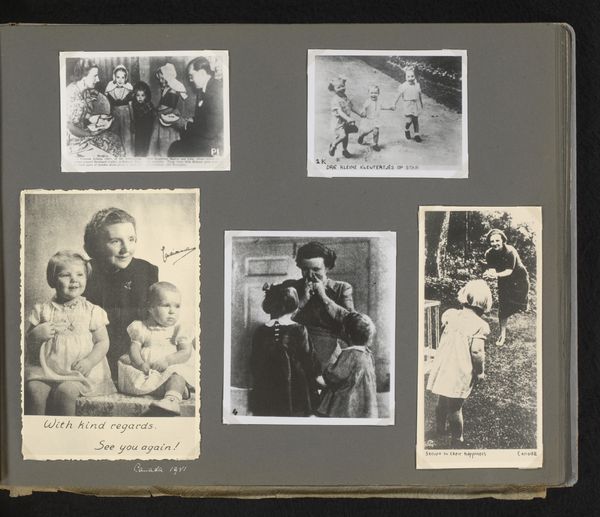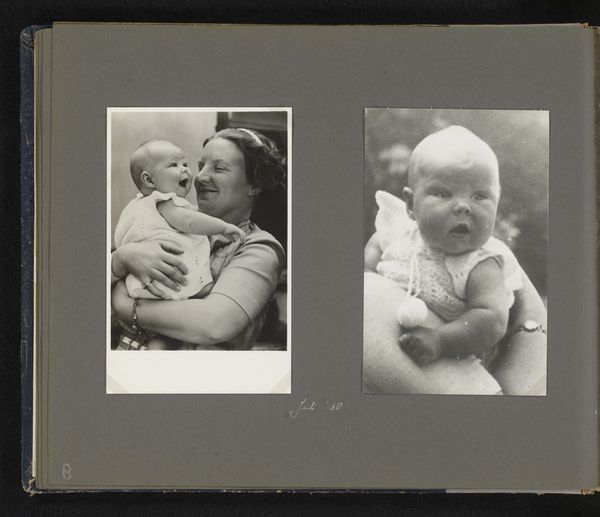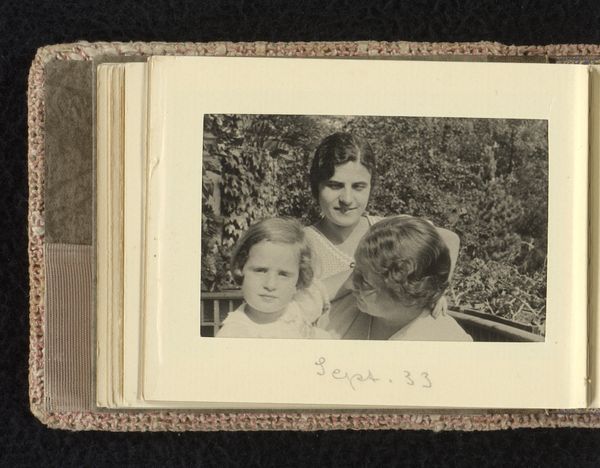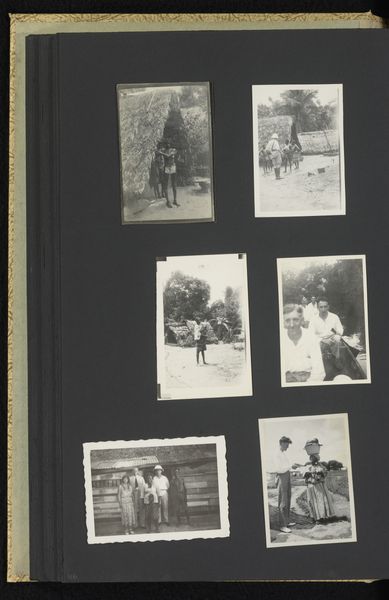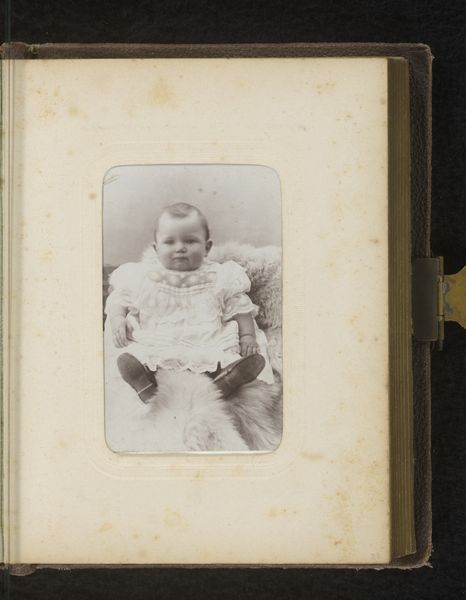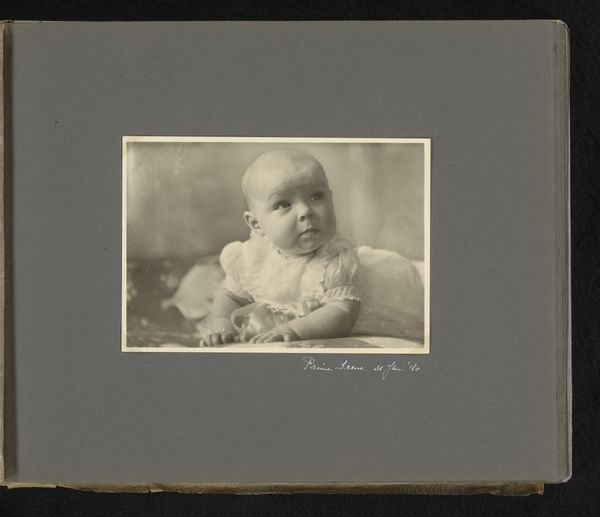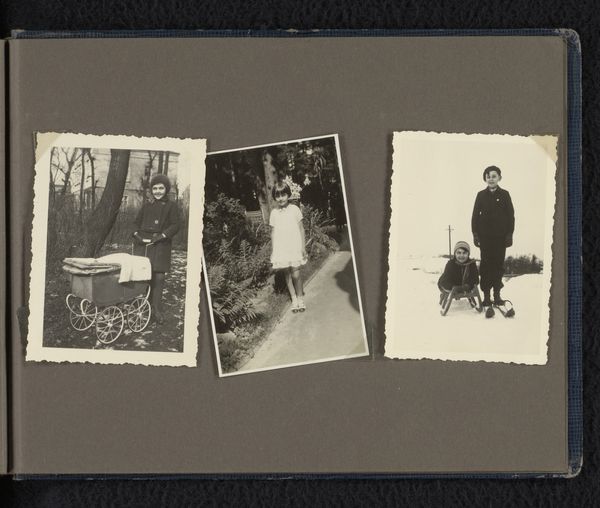
photography, photomontage
#
portrait
#
figuration
#
photography
#
photomontage
#
group-portraits
#
photo montage
#
modernism
Dimensions: height 150 mm, width 100 mm, height 222 mm, width 280 mm
Copyright: Rijks Museum: Open Domain
Editor: This photo montage titled "Beatrix, Juliana en Montgomery," made sometime between 1939 and 1945, is striking. The juxtaposition of intimate, colourful baby snapshots with formal black and white portraits creates a really intriguing effect. How would you interpret this unusual combination of images? Curator: Observe first the spatial arrangement. Note the careful ordering of photographic images and graphic elements to create an intrinsic visual coherence. Colour photographs of Princess Beatrix are positioned at the lower left, balanced by monochromatic portraiture of Princess Juliana and General Montgomery in the upper right and lower right quadrants. This structural balance, or the lack thereof, dictates a meaning onto itself, what do you think that meaning might be? Editor: It is as though these important familial relationships and a war-time hero are being placed carefully alongside moments of domestic childhood? So is the effect about trying to capture both personal and national identities? Curator: The placement of images becomes a potent form of visual language. This is not mere arrangement but intentional juxtaposition and collation. We can assess not just the denotative image of Montgomery, for example, but what this signified with the portrait of a young princess? Semiotics are potent tools, are they not? Editor: Indeed. Thinking about it formally has revealed layers I wouldn’t have immediately considered. This really has changed how I initially saw this photomontage and has taught me how to interpret relationships and symbolism across multiple mediums. Curator: Understanding how constituent parts communicate, this gives access to richer understanding about a complex of signs within an artwork. These all work toward constructing an artistic discourse.
Comments
No comments
Be the first to comment and join the conversation on the ultimate creative platform.
